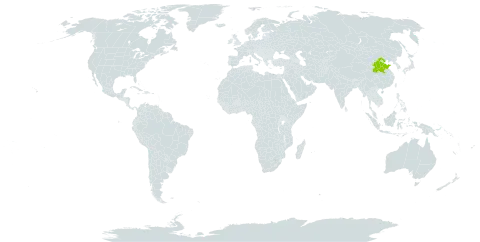Shrubs to 1 m tall. Bark dark brown. Current-year branchlets grayish brown, densely pubescent. Leaves digitate, 4-foliolate; petiole 4-12 mm, persistent or caducous; leaflet blades obovate, 5-20(-30) × 2-10(-15) mm, densely pubescent, apex rounded, truncate, or emarginate. Flowers solitary. Pedicel 0.8-1.2 cm, articulate basally from middle. Calyx tube ca. 1 cm, base gibbous. Corolla yellow to pinkish, 2.5-2.8 cm; standard obovate-cuneate, claw ca. 5 mm, apex obtuse to emarginate; wings with claw ± as long as limb, auricle small; keel with claw ± as long as limb, auricle small. Ovary densely villous. Legume cylindric, 2-3(-4) cm, densely villous. Fl. Apr-May, fr. Jun.
